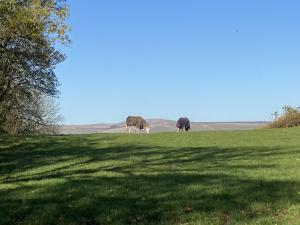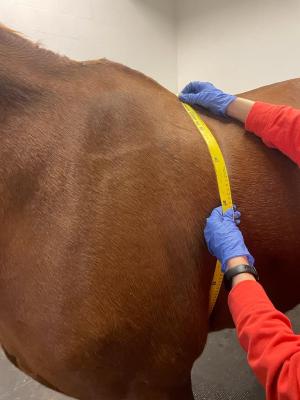
By Vet Bethan Harper
Spring is fast approaching, despite the recent cold spell, and it is important to make sure you and your horse are prepared.

One of the biggest concerns in the changing season is the spring flush of grass which is rich in sugar. A high sugar intake can precipitate an episode of laminitis, particularly in horses that are already predisposed, such as overweight horses or those with equine Cushing’s disease or Equine Metabolic Syndrome (EMS).
One of the best things you can do to offset this risk is make sure your horse enters the spring season at a healthy weight, and with any underlying metabolic diseases under control.
There are several methods of assessing your horse’s weight, from using a weigh tape, to putting them on a weighbridge. Weigh tapes won’t give you the most accurate number, but if used correctly and consistently, they can show you trends allowing you to track weight loss.
Another way of assessing your horse’s weight is by performing body condition scoring, which involves assessing fat coverage over the neck, back, ribs and pelvis. These easy-to-follow charts can be found online and allow you to give a numerical rating out of either 5 or 9. Regardless of which method you choose, the most important factor is consistency. Regular application of these techniques will allow you to see changes in your horse’s weight so you can adjust their management accordingly.

If your horse needs to lose weight, dietary modification is important, particularly if they also suffer from EMS. Reducing sugar intake can be tricky, especially when grazing, but there are steps you can take. Unfortunately, simply limiting turnout time is not effective, as studies have shown that ponies in particular will quickly learn that they have limited time and simply gorge for the few hours they do get out.
Other methods include the use of grazing muzzles which restrict the amount of grass a horse can eat or using alternative grazing systems such as track systems. Track systems can be very beneficial if done correctly, as they both reduce the amount of grazing, and increase movement.
Exercise is another key component and is just as important as dietary modification. Provided there is no medical reason for keeping them on box rest, all horses and ponies down to the tiniest Shetland will benefit from regular exercise. Ridden exercise is great where appropriate, but you can also do groundwork such as lunging, or even walking in hand.
If you plan on competing with your horse this summer, or even just taking longer hacks or trips to the beach, building their fitness now will help to make sure they are in top shape for the upcoming season and reduce the risk of injury due to sudden changes in workload.
Spring will also bring an influx of biting insects. This can be a particularly challenging time for horses that suffer from sweet itch, an allergic reaction to midge bites. The best method to manage sweet itch is to reduce exposure, which can be done by avoiding turnout at dusk and dawn when midges are most active, avoiding turnout near water sources, using a fly rug and mask and use of a fly repellent. There is also a vaccine available for sweet itch, which works by reducing the immune response to the bite. This must be used in conjunction with insect control methods but may offer some additional relief to these horses. The vaccine should be administered in advance of the midge season as it takes 5 weeks to become effective so now is the time to discuss this with your vet.